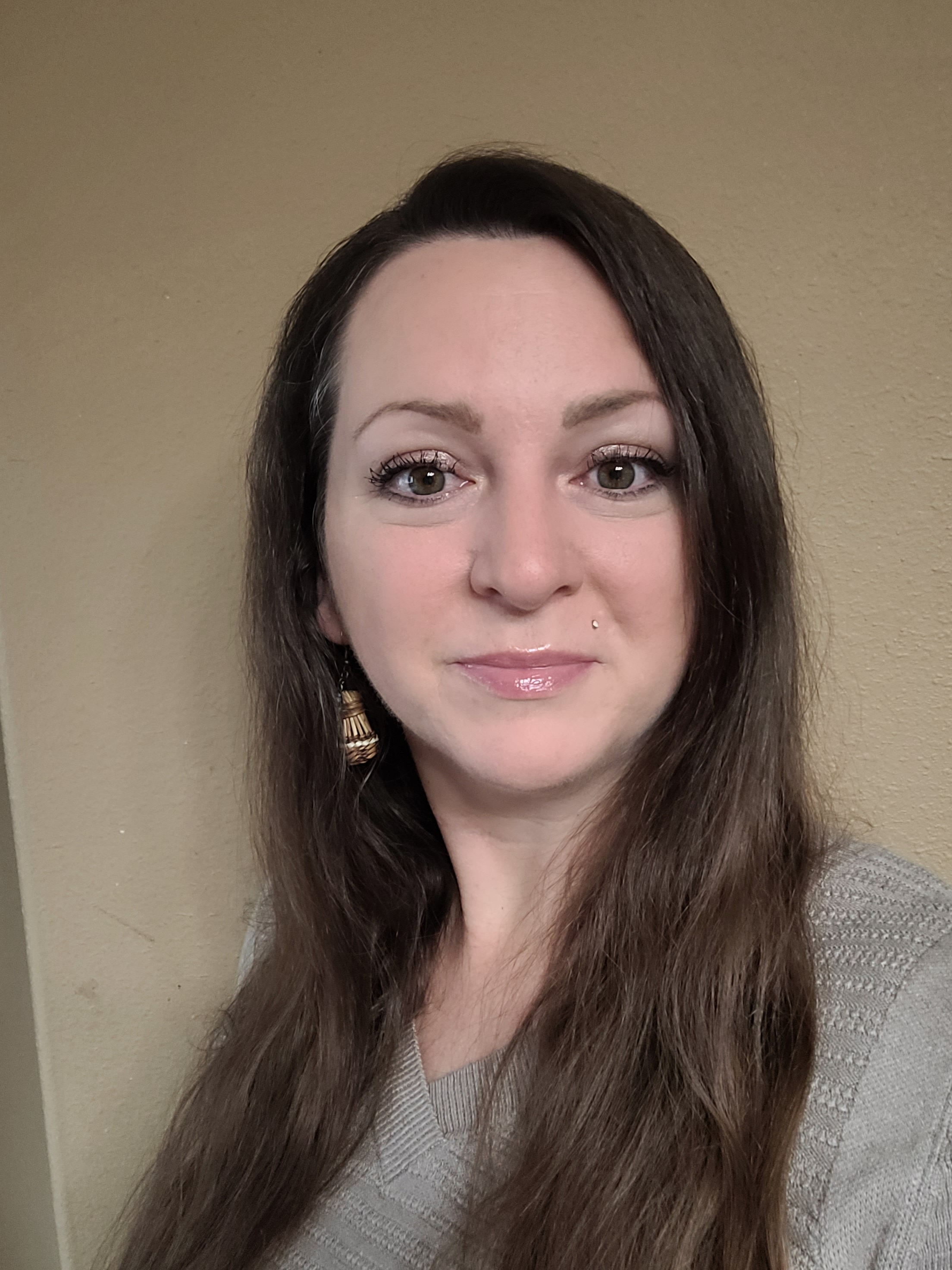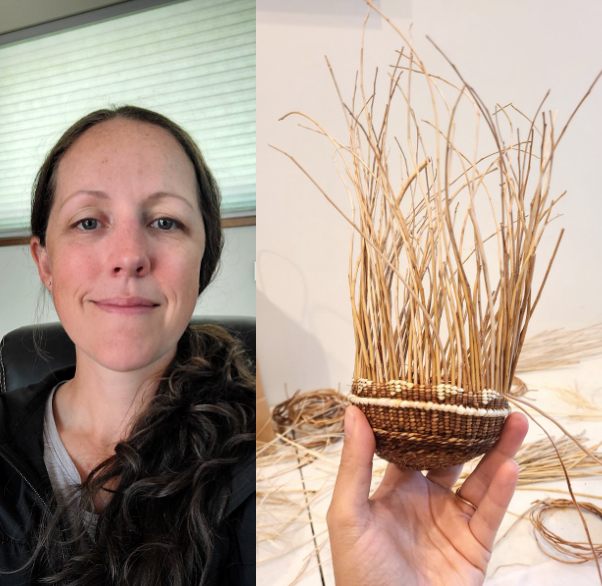ARTIST BIOGRAPHY
 | Traditional Skill/Art: Basketmaking Years Won: 2024 Contact Information: Phone: (541)-817-9064 Email: bettyann81@hotmail.com |
Beth’Ann Gipson is a basketmaker, drummer, traditional regalia maker, and member of the Cow Creek Band of Umpqua Tribe of Indians. The granddaughter of Rose Augusta Deardorff and a member of the Rondeau family, Gipson grew up in Canyonville, OR during the last part of the 20th century. When Gipson first started weaving baskets in 2012, she remarks, “I honestly was hooked, and I don't know if it was just the basketry, but it was the people. It was the relations.”
Gipson heavily involved in revitalization efforts for her Tribe, from drumming and singing to powwows to dance. In 2022, she received a Traditional Arts Recovery Program award from the Oregon Arts Commission to create new baskets in her Tribe’s tradition. Gipson is proud to be carrying on basketmaking traditions that are gradually making their way back into her community.
APPRENTICE BIOGRAPHY
 | Sarah Thompson MooreTraditional Skill/Art: Basketmaking Years Won: 2024
|
Sarah Thompson Moore is of the Cow Creek Band of the Umpqua Tribe of Indians in Southern Oregon, from the Rainville family line. She has a BFA in fine arts, focusing on sculpture and public art installations. She has been learning traditional basketry with Beth’Ann Gipson, who guides her on material gathering and various weaving techniques. Sarah is inspired by the great ingenuity that goes into basket-making, and basketry allows Sarah to integrate her cultural heritage with her love of nature, utility, art and humankind. Sarah is invested in the future of basketry within her community; she states, “One day, I will be in a position to teach what I have learned to others, to help carry on these traditions into the future. We cannot lose them again.”
Q&A WITH THE MENTOR ARTIST
For my basket weaving, I follow in the footsteps of my predecessors. I start by gathering a variety of materials: willow sticks, hazel sticks, willow root, spruce root, pine root, alder bark, cedar bark, Oregon grape root, beargrass, cedar, juncus, tule, maiden hair fern, and woodwardia fern. My teachers taught me the proper seasons for gathering and how to process the fibers to ready them for weaving. Part of the challenge is to figure out when it’s time to harvest and not to take too much—just what one needs. You only take what you need, gather what you need, but never over. I give back to the land by offering some tobacco in thanks.
Baskets are valuable for a variety of uses. We gather some of our traditional berries in them, the huckleberry. I’ve make fish traps that have one end open and lined with spikes so that the fish or eels swim in and can’t get out. Basket materials also have medicinal value. We make baby rattles out of willow root, which contains natural aspirin and helps the babies when their teething. Some of my favorite baskets to weave include those baby rattles as well as trinket, tobacco, and burden baskets.
My elders fought the government to have their treaty rights restored; they wanted to revitalize practices like dancing and powwows. Because the CCBUTI had been terminated in 1954, like so many other Indian Tribes in Oregon, their culture was disrupted, their heritage no longer accessible. Although the Cow Creek Band of Umpqua Tribe of Indians was finally restored in 1982, there were only a few traditional basket designs available to serve as models. To learn how to weave, I looked to nearby indigenous peoples for assistance. I worked with a variety of master basket weavers from the Karuk and Yurok Tribes, whose traditional lands in northern California and southern Oregon border those of the CCBUTI. Well-known master basket weavers Wilverna Reece, Alice Lincoln Cook, and Lena Herd were and are my mentors; I also studied with Dr. Margaret Matheson, who has been active in revitalizing Native basket making in western Oregon.
Keeping the use of some of our baskets ties us in with our ancestors. The old spirits recognize us while we are high in the mountains picking. My goal in my lifetime is to train at least 10 master weavers in our tribe. I can’t wait to be an elder and overlook how far we have come as a tribe
In 2022, I received a Traditional Arts Recovery Program award from the Oregon Arts Commission to create new baskets in my Tribe’s tradition.
As for honors, it is always and honor to sit and weave with the membership. They are what drive me daily. The tribal membership and community here in southern Oregon send me beautiful messages and tell me how proud they are of me and they are thankful to see the teachings still being used on the lands. This makes my heart happy.
Visit OFN's Culture Keepers Roster to learn more about the artist.
Traditional Arts Apprenticeship Program
More OFN programs
OFN main page
